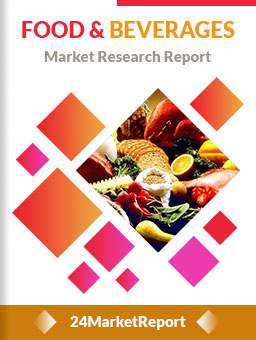
Download FREE Report Sample
Download Free sampleJapanese Sake is a fermented alcoholic beverage made from sake rice, also called sakamai.
Japanese Sake is mainly classified into following types: Ordinary Sake, Junmai, Honjozo, Junmai Ginjo and Ginjo. Junmai now is the key type of US market, which takes up about 30.5% of the total market volume in 2018, due to the good taste, better quality and acceptable price. But for the market size, Junmai Ginjo will take half of the market in 2018 due to the high price.
Sake Market aims to provide a comprehensive presentation of the global market for Sake (Japanese Rice Wine), with both quantitative and qualitative analysis, to help readers develop business/growth strategies, assess the market competitive situation, analyze their position in the current marketplace, and make informed business decisions regarding Sake (Japanese Rice Wine). Sake Market contains market size and forecasts of Sake (Japanese Rice Wine) in global, including the following market information:
Global Sake (Japanese Rice Wine) Market Revenue, 2018-2023, 2024-2030, ($ millions)
Global Sake (Japanese Rice Wine) Market Sales, 2018-2023, 2024-2030, (K MT)
Global top five Sake (Japanese Rice Wine) companies in 2022 (%)
The global Sake (Japanese Rice Wine) market was valued at US$ million in 2022 and is projected to reach US$ million by 2029, at a CAGR of % during the forecast period. The influence of COVID-19 and the Russia-Ukraine War were considered while estimating market sizes.
The U.S. Market is Estimated at $ Million in 2022, While China is Forecast to Reach $ Million.
Ordinary Sake Segment to Reach $ Million by 2029, with a % CAGR in next six years.
The global key manufacturers of Sake (Japanese Rice Wine) include Dassai, Juyondai, Kubota, Hakkaisan, Kokuryu, Sudohonke, Takara, Gekkeikan and Ozeki, etc. in 2022, the global top five players have a share approximately % in terms of revenue.
We surveyed the Sake (Japanese Rice Wine) manufacturers, suppliers, distributors and industry experts on this industry, involving the sales, revenue, demand, price change, product type, recent development and plan, industry trends, drivers, challenges, obstacles, and potential risks.
Total Market by Segment:
Global Sake (Japanese Rice Wine) Market, by Type, 2018-2023, 2024-2030 ($ Millions) & (K MT)
Global Sake (Japanese Rice Wine) Market Segment Percentages, by Type, 2022 (%)
Ordinary Sake
Junmai
Honjozo
Junmai Ginjo
Ginjo
Global Sake (Japanese Rice Wine) Market, by Application, 2018-2023, 2024-2030 ($ Millions) & (K MT)
Global Sake (Japanese Rice Wine) Market Segment Percentages, by Application, 2022 (%)
20-40 Years Old
40-60 Years Old
Above 60 Years Old
Global Sake (Japanese Rice Wine) Market, By Region and Country, 2018-2023, 2024-2030 ($ Millions) & (K MT)
Global Sake (Japanese Rice Wine) Market Segment Percentages, By Region and Country, 2022 (%)
North America
US
Canada
Mexico
Europe
Germany
France
U.K.
Italy
Russia
Nordic Countries
Benelux
Rest of Europe
Asia
China
Japan
South Korea
Southeast Asia
India
Rest of Asia
South America
Brazil
Argentina
Rest of South America
Middle East & Africa
Turkey
Israel
Saudi Arabia
UAE
Rest of Middle East & Africa
Competitor Analysis
The report also provides analysis of leading market participants including:
Key companies Sake (Japanese Rice Wine) revenues in global market, 2018-2023 (Estimated), ($ millions)
Key companies Sake (Japanese Rice Wine) revenues share in global market, 2022 (%)
Key companies Sake (Japanese Rice Wine) sales in global market, 2018-2023 (Estimated), (K MT)
Key companies Sake (Japanese Rice Wine) sales share in global market, 2022 (%)
Further, the report presents profiles of competitors in the market, key players include:
Dassai
Juyondai
Kubota
Hakkaisan
Kokuryu
Sudohonke
Takara
Gekkeikan
Ozeki
Yaegaki
Otokoyama
SakeOne
Outline of Major Chapters:
Chapter 1: Introduces the definition of Sake (Japanese Rice Wine), market overview.
Chapter 2: Global Sake (Japanese Rice Wine) market size in revenue and volume.
Chapter 3: Detailed analysis of Sake (Japanese Rice Wine) manufacturers competitive landscape, price, sales and revenue market share, latest development plan, merger, and acquisition information, etc.
Chapter 4: Provides the analysis of various market segments by type, covering the market size and development potential of each market segment, to help readers find the blue ocean market in different market segments.
Chapter 5: Provides the analysis of various market segments by application, covering the market size and development potential of each market segment, to help readers find the blue ocean market in different downstream markets.
Chapter 6: Sales of Sake (Japanese Rice Wine) in regional level and country level. It provides a quantitative analysis of the market size and development potential of each region and its main countries and introduces the market development, future development prospects, market space of each country in the world.
Chapter 7: Provides profiles of key players, introducing the basic situation of the main companies in the market in detail, including product sales, revenue, price, gross margin, product introduction, recent development, etc.
Chapter 8: Global Sake (Japanese Rice Wine) capacity by region & country.
Chapter 9: Introduces the market dynamics, latest developments of the market, the driving factors and restrictive factors of the market, the challenges and risks faced by manufacturers in the industry, and the analysis of relevant policies in the industry.
Chapter 10: Analysis of industrial chain, including the upstream and downstream of the industry.
Chapter 11: The main points and conclusions of the report.

Speak to our Custom Research Team and get the Custom Research in a budget
Custom ResearchFrequently Asked Questions ?
A license granted to one user. Rules or conditions might be applied for e.g. the use of electric files (PDFs) or printings, depending on product.
A license granted to multiple users.
A license granted to a single business site/establishment.
A license granted to all employees within organisation access to the product.
Upto Working 24 to 48 hrs
Upto 72 hrs max - Weekends and Public Holidays
Online Payments with PayPal and CCavenue
Wire Transfer/Bank Transfer
Hard Copy




 Industry Market Size
Industry Market Size SWOT Analysis
SWOT Analysis Industry Major Players
Industry Major Players Revenue Forecasts
Revenue Forecasts Historical and Forecast Growth
Historical and Forecast Growth Profitability Analysis
Profitability Analysis
























